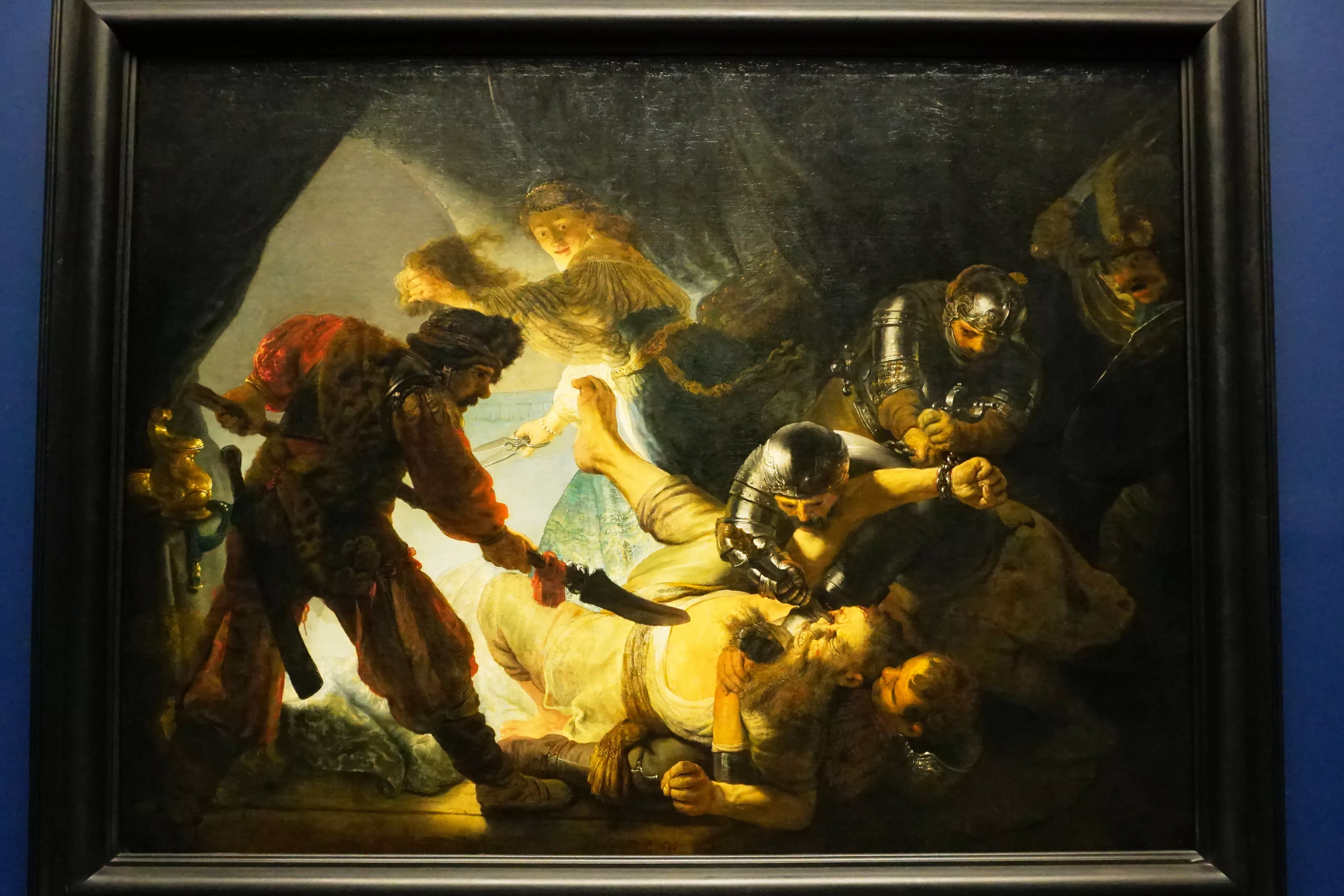Rembrandt van Rijn, the renowned Dutch artist of the 17th century, is widely celebrated for his unparalleled mastery of light and shadow, as well as his ability to capture the depth of human emotions. One of his most famous and compelling works is ‘The Blinding of Samson.’ This monumental painting depicts the tragic biblical story of Samson, a hero whose strength resided in his long hair, which was eventually cut off by his treacherous lover Delilah. In this article, we will delve into the profound narrative and symbolism behind Rembrandt’s masterpiece, exploring both its technique and the underlying message it conveys.
Analyzing Rembrandt’s ‘Blinding of Samson’: Technique and Symbolism
Rembrandt’s ‘Blinding of Samson’ showcases his impeccable technique and meticulous attention to detail. The painting is dominated by a striking contrast between light and shadow, a characteristic known as chiaroscuro. Rembrandt expertly uses this technique to emphasize the pivotal moment of Samson’s vulnerability and despair as his eyes are gouged out. The dramatic play of light further enhances the emotional intensity of the scene, evoking a sense of tragedy and loss.
Symbolism plays a crucial role in Rembrandt’s depiction of ‘The Blinding of Samson.’ The use of symbolic elements adds layers of meaning to the narrative, inviting viewers to delve deeper into the story. The central figure of Samson, for instance, is framed by a halo of light, symbolizing divine intervention. In contrast, Delilah, the agent of betrayal, is painted in shadow, signifying her sinister role in Samson’s downfall. The painting also incorporates subtle details, such as the broken column in the background, which represents the destruction of Samson’s strength and the collapse of his heroic status.
Rembrandt’s mastery of color further contributes to the symbolic depth of the painting. The vibrant reds and oranges used for Samson’s cloak and Delilah’s dress symbolize passion and desire, highlighting the destructive power of forbidden love. The dark, earthy tones prevalent throughout the painting evoke a somber mood, reinforcing the tragedy of the narrative. Rembrandt’s attention to color serves to intensify the emotional impact and draw viewers into the world of the painting.
Unveiling the Profound Narrative of Rembrandt’s ‘Blinding of Samson’
Beyond technique and symbolism, Rembrandt’s ‘Blinding of Samson’ presents a profound narrative that resonates with viewers on a deeper level. The painting captures a pivotal moment in the biblical story, depicting the tragic consequences of Samson’s vulnerability and his ultimate loss of strength. Through his masterful portrayal of human emotion and the use of light and shadow, Rembrandt invites viewers to reflect on themes of betrayal, vulnerability, and the fleeting nature of power.
The narrative of ‘The Blinding of Samson’ serves as a cautionary tale, reminding viewers of the consequences that can arise from the abuse of power and the dangers of succumbing to temptation. The painting prompts contemplation of the human condition, challenging viewers to question their own weaknesses and vulnerabilities. Rembrandt’s ability to convey such universal themes through his art is a testament to his skill as a storyteller and his enduring legacy as one of history’s greatest painters.
Rembrandt’s ‘Blinding of Samson’ continues to captivate viewers to this day, both through its technical brilliance and its profound narrative. The painting stands as a testament to Rembrandt’s unmatched ability to capture the human experience and evoke emotion through his masterful use of light, color, and symbolism. By delving into the technique and symbolism employed in this masterpiece, we gain a deeper appreciation for the rich layers of meaning embedded within this iconic work of art. Rembrandt’s ‘Blinding of Samson’ remains a timeless masterpiece that continues to inspire and provoke thought, an enduring testament to the power of art to convey complex narratives and touch the depths of the human soul.











